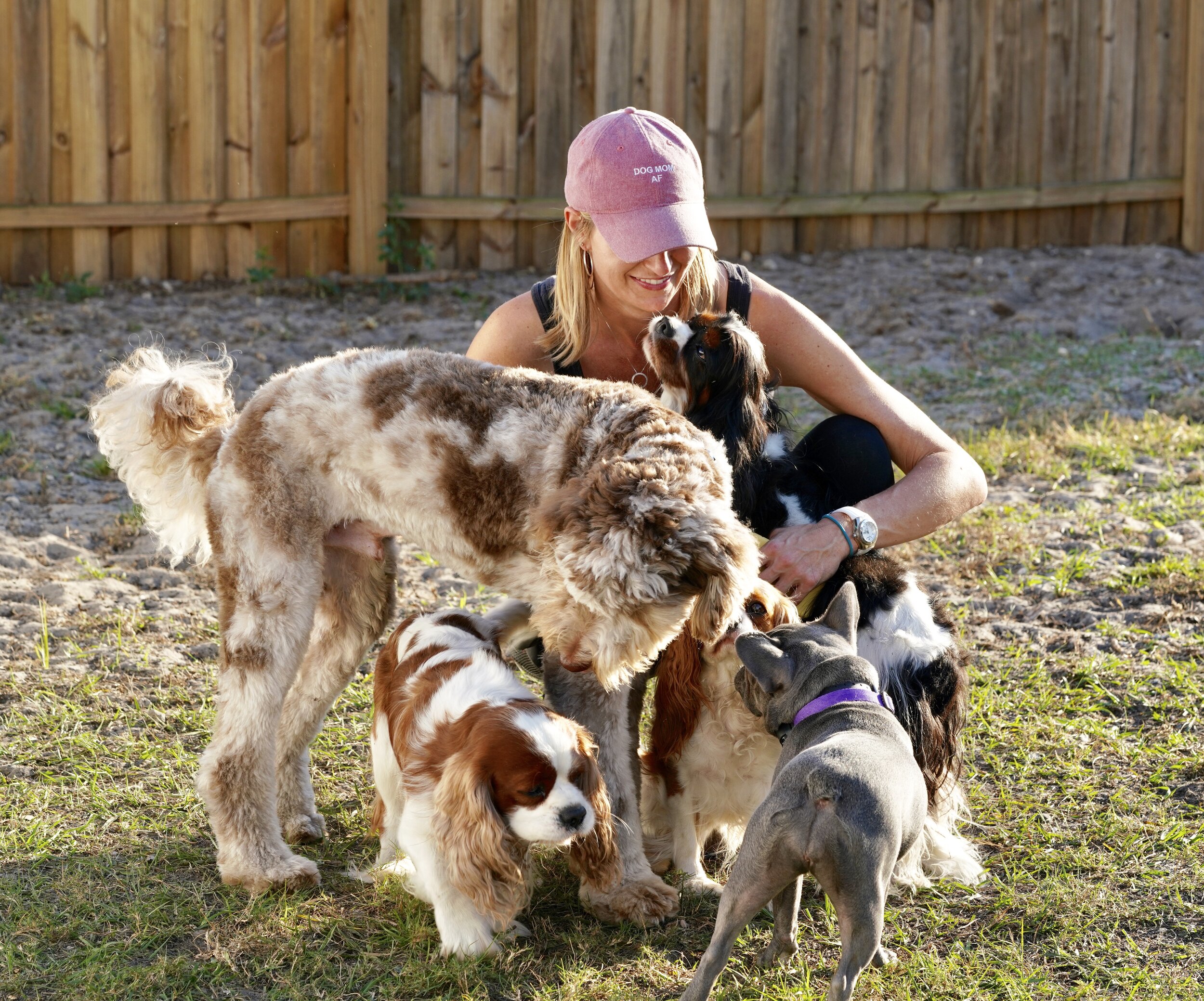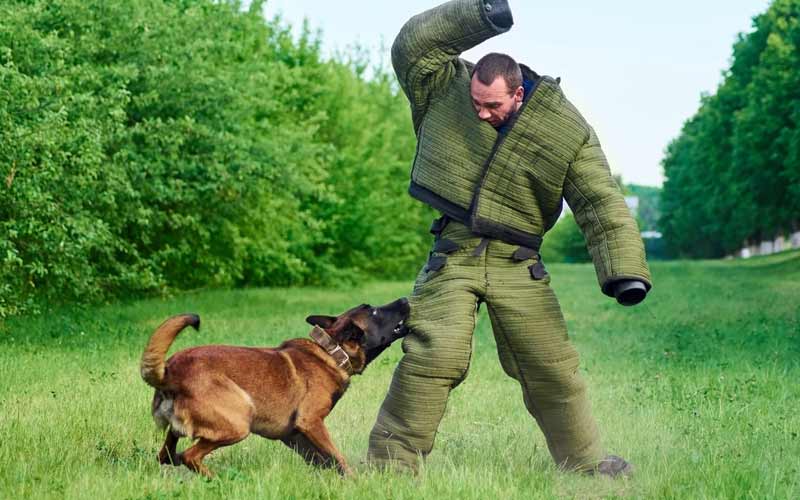How Dog Training Builds Trust and Confidence in Your Dog
Wiki Article
Newbie's Guide to Effective Canine Training in the house
Successfully training a pet dog in your home needs a nuanced understanding of canine actions and efficient interaction strategies. Establishing clear training objectives, using high-grade incentives, and maintaining uniformity across family members are vital components. Integrating training into everyday regimens can enhance both interaction and retention. Many amateur fitness instructors encounter challenges that may impede progress. To navigate these complexities successfully, it's vital to check out numerous key elements that can change your strategy and result in an unified partnership with your pet. What fundamental concepts should every novice grip to ensure success?Comprehending Pet Actions
Recognizing pet actions is crucial for reliable training and cultivating an unified connection between humans and their canine companions. Pets connect largely via body movement, vocalizations, and facial expressions, making it important for owners to analyze these signals properly. Identifying actions such as tail wagging, roaring, or trembling can supply insights right into a pet dog's mood and purposes.
Typical behavioral problems, such as aggression, anxiousness, or too much barking, usually originate from misconceptions or unmet demands. Observing and addressing these issues immediately can prevent rise and ensure a favorable training experience. By promoting a deep understanding of pet behavior, owners can customize their training approaches to fit their canine friends, inevitably resulting in a well-behaved and pleased pet.
Necessary Educating Devices
A well-equipped training space can substantially improve the performance of pet training in the house. Essential training tools ensure that both the trainer and the canine can participate in productive sessions that cultivate knowing and bonding.
Purchasing a tough leash and a comfy, well-fitting collar or harness is important for safety and security and control. These tools help develop limits and ensure the pet stays protected throughout training. Furthermore, a designated training location, devoid of distractions, help concentration for both the instructor and the canine.
Educating help such as training pads, cones, or agility devices can additionally enhance the experience by presenting selection and difficulties. Having a note pad or digital application for tracking development can be invaluable, enabling you to note successes and locations for improvement. Using these essential devices will create a favorable training environment and lay the foundation for effective understanding.
Producing a Training Regimen
Establishing a regular training routine is crucial for effective dog training in the house. A well-structured regular not just helps in reinforcing preferred actions however additionally offers your pet dog with a sense of safety and predictability. To produce an effective training routine, start by identifying particular training goals, such as fundamental commands, chain walking, or house-training.Select a designated time every day for training sessions, ideally when your pet dog is sharp and responsive. Sessions needs to be brief, about 5 to 15 mins, to keep emphasis and stop tiredness. Consistency in timing and environment will enhance your dog's knowing experience.
Incorporate training into daily activities to reinforce skills. Practice commands throughout walks or nourishment, which incorporates discovering into natural routines. In addition, continue to be flexible and readjust the regular as required, accommodating your dog's power degrees and state of mind.
Positive Reinforcement Techniques
Favorable support techniques are fundamental to effective pet training, advertising wanted behaviors via benefits rather than penalty. This approach utilizes positive stimulations, such as treats, praise, or playtime, to motivate canines to repeat specific actions. The keystone of this method is timing; rewards ought to be given right away following the wanted habits to create a clear organization.When applying positive support, it is crucial to select rewards that are inspiring for your dog. High-value deals with, such as tiny pieces of chicken or cheese, can be specifically efficient throughout training sessions. Furthermore, varying the benefits can keep your dog's rate of interest and excitement.
Begin with simple commands, like "rest" or "stay," and progressively progress to more complicated jobs. Consistency is essential; make certain that all family participants use the exact same commands and incentive systems to avoid complication.
Furthermore, it is vital to continue to be client and avoid stress. Pet dogs, like human beings, find out at their own speed. By fostering an encouraging training environment with favorable reinforcement, you can improve your pet's learning experience while enhancing the bond in between you and your furry friend, laying the groundwork for effective training outcomes.
Typical Training Difficulties
While educating a dog in the house can be a gratifying experience, it usually includes a collection of common difficulties that can test both persistence and uniformity. One widespread issue is diversion. Dogs may end up being conveniently averted by sounds, activities, or perhaps fragrances in their atmosphere, making it hard to keep their focus during training sessions.One more difficulty is inconsistency in commands and reinforcement. It can puzzle the pet dog and prevent progress if family participants make use of various hints or incentives. Establishing a unified technique is vital for efficient interaction.
In addition, read what he said pets can experience aggravation or tension, especially if they do not recognize what is anticipated of them. This can bring about unwanted habits, such as barking or chewing.
Ultimately, the timing of reinforcement is crucial (Dog training). Postponed incentives can reduce the effectiveness of favorable support, as pets may fall short to link the actions with the benefit
Overcoming these obstacles requires commitment, clear communication, and an organized training plan. Acknowledging and resolving these typical obstacles will certainly lead the way for a more delightful and effective training experience in the click site house.
Conclusion
To conclude, successful dog training in the house demands a comprehensive understanding of canine behavior and effective interaction techniques. By establishing clear training goals and utilizing top notch deals with together with positive reinforcement, the training process becomes a lot more satisfying for both the canine and the trainer. Persistence, uniformity, and versatility are important parts that assist in knowing. Eventually, integrating training right into daily regimens improves the bond between pet dog and proprietor, making the experience both pleasurable and effective.Developing a regular training routine is crucial for effective pet training at home.Favorable support techniques are fundamental to efficient canine training, promoting wanted habits with benefits rather than punishment (Dog training). By fostering a helpful training atmosphere through favorable support, you can improve your dog's knowing experience while enhancing the bond between you and your furry companion, laying the foundation for effective training results
In final thought, effective canine training at click site home requires an extensive understanding of canine behavior and reliable interaction techniques. By establishing clear training objectives and making use of high-quality deals with together with positive support, the training procedure comes to be much more fulfilling for both the pet and the fitness instructor.
Report this wiki page